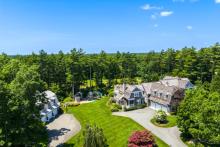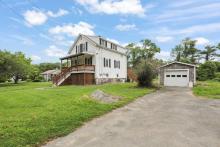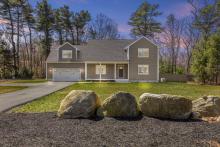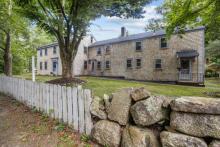Marion Open Space Commission: Acquiring land at what cost?
The town’s Open Space Acquisition Commission does things a little differently.
And commission member John Rockwell says that’s OK.
But two recent land deals—the Hall property near Quelle Lane and the Habitat for Humanity parcel— have raised a few eyebrows.
The Commission is an elected group with the mission of buying land and protecting it. Funding originally came from a “land bank,” which took in two percent of the town tax surcharge funds.
That eventually dissolved, but the funds were transferred to the Commission. Now, it only receives Community Preservation Act funds or grants, but still has $400,000 from the land bank.
“We don’t buy something just because we have money,” Rockwell says. “The land is for the public and we want to get it for the town.”
The Commission also sends out town-wide surveys every four years seeking input on land acquisition and access. The 2011 surveys, which produced 152 responses, showed that 70 percent of responders wanted the Commission to continue open space purchasing.
First was the Hall property at the end of Quelle Lane, which the Commission sought to buy for its waterfront access and potential for recreational shellfishing.
The only problem?
The private neighborhood association said the land was always underwater, devoid of any shellfish, invaded private property and would cause a dangerous increase in traffic.
The Open Space Commission asked the Community Preservation Commission for $60,000 to buy the land despite having $400,000 in its bank already.
“You’re paying $60,000 to add to Sippican Harbor,” said resident Carol Amick at an October meeting. “The sale price for underwater, unbuildable and unusable land is way overpriced.”
The neighborhood said it didn’t know about the intentions at all, but Rockwell says the hush-hush procedure is used to prevent other bidders from jumping up the price.
“Shore access was a high priority on the returned surveys,” Rockwell says. “We thought it was a good property.”
The project has since fallen through— Rockwell says there was an issue with the title.
Two Open Space Commission members resigned in the process as well.
Then came the Habitat for Humanity house.
Two years ago, the Open Space Commission and Affordable Housing Trust worked together to purchase four acres at 185 Wareham with Community Preservation Act funds. This was done in hopes to bring more affordable housing to the town, Selectman Roger Blanchette says.
The area also abuts existing Open Space Commission property at Washburn Park, and Rockwell says the Commission would like to have a footpath through the area to connect from Route 6 to the park.
But the January 3 Board of Selectmen meeting had the Selectmen, Planning Board and Open Space Commission pointing fingers as to why a 5,000 square foot plot was approved for the Habitat house when it should be at 15,000. The parcel is zoned for 15,000 square foot lots but to help Habitat keep the cost of the project low, the town agreed to sell Habitat a 5,000 square feet.
Blanchette said at the January meeting the “cheap” 5,000 square feet piece for the housing lot was an inappropriate suggestion on behalf of the Open Space Acquisition Committee, which was given the large parcel of land available at the site.
“There are four acres there,” he said. “They can’t just give us 10,000 square feet more?”
Rockwell said the Commission brought the Habitat housing proposal to the town officials and it was they who voted on the 5,000 square feet during Town Meeting two years ago.
Planning Board member Tom Maguaran said the 5,000 square feet ruling was “stingy” and “inappropriate.”
But now, Rockwell says he is willing to do anything to get the process completed. “A bigger lot? That’s fine,” he says. “We’ve been sitting on this for two years.
We just want to get this completed.”
Since being established several years ago, the Commission has helped acquire more than 600 acres of open space and $1 million in grants.
Rockwell says the acquisition of land helps protect public water supplies, prevent development and keep the natural environment thriving. Although the main focus now is getting land, a shift to accessibility will come.
“We want everyone to use our facilities,” Rockwell says. “Anyone can go to them now. We’re developing trail maps and there are some trails already.”
The group has worked with the Sippican Lands Trust, which is privately owned, on purchasing land as well. Lands Trust Chris Bryant says he was the first chairman of the Open Space Commission and helped form the group.
The Commission, however, now lacks a chair position. Rockwell says the reason for this unique setup is simple:
“No one person is more important than the other. When a Chairman speaks, many people think that’s the entire position of the group. I don’t see it that way. I’m an advocate for open space and represent my own views, as do the other members. We don’t always agree, but we respect each other’s positions.”
He also says the Commission serves the public, and if the people want to shift from acquisition to access, it will be done.
















